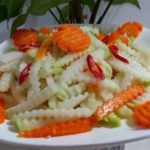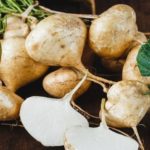How to Choose and Buy Jicama
When selecting jicama, choose smaller to medium-sized roots with smooth, bright brown skin, free from any signs of decay. This way, you’re more likely to end up with a sweet and tasty treat.
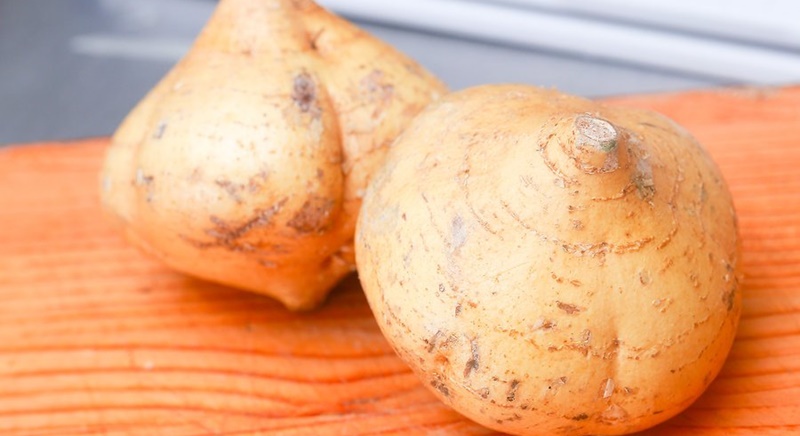
For those who prefer a crisp texture, larger jicama roots are the way to go. However, keep in mind that these larger roots tend to be tougher than their smaller counterparts.
Fresh and flavorful jicama should also feel heavy for its size. If a large root feels light, it may have been in the ground for too long, causing it to lose moisture.
Preparing Jicama
Use a brush, cloth, or sponge to scrub the exterior of the jicama root, ensuring that all dirt is removed. You can speed up this process by running the jicama under a strong stream of water.
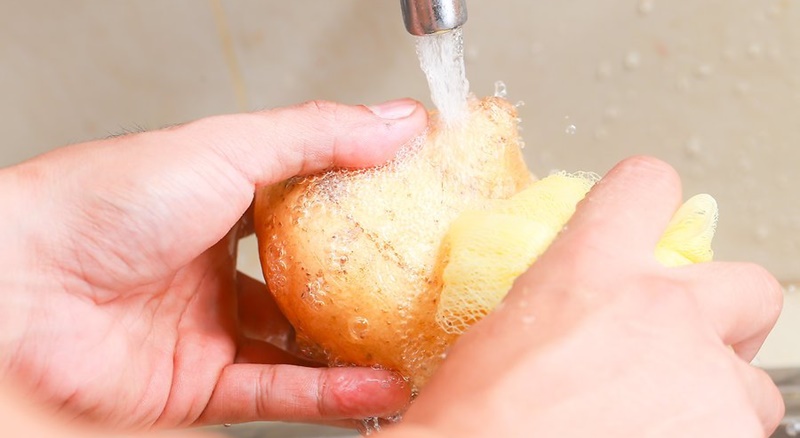
To peel the jicama, you can use a specialized potato peeler, a double-edged knife, or a single-edged knife to cut a small section at the top of the root, followed by peeling the skin off with your hands.
Cut the jicama into wedges, strips, rounds, or any shape that suits your upcoming recipe.
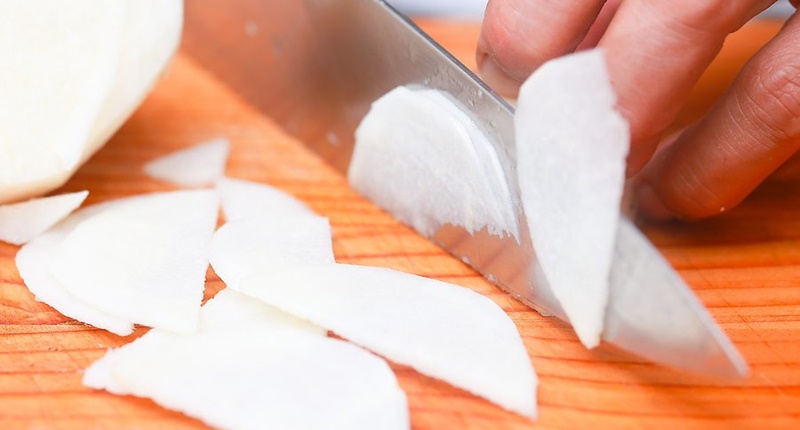
If you’re not planning to use the jicama right away, you can store it in a bowl of cold water with a few drops of lemon juice for up to two days in the refrigerator.
Cooking with Jicama
Salads: Cut the jicama into wedges and combine it with your favorite fruits and vegetables. Add a dressing, and you’ve got a refreshing salad.

Jicama Slaw: Shred the jicama and combine it with shredded cabbage, carrots, and your choice of protein, such as beef or fish. Season with salt, pepper, oil, vinegar, and lemon juice for a delicious sweet and sour slaw.
Stir-fry: Cut the jicama into thick strips and stir-fry it with other vegetables or proteins. Add a splash of vinegar for a unique flavor.

Roasted Jicama: Slice the jicama into thick pieces, drizzle with oil, and season with salt and pepper or your favorite spice blend. Roast in the oven at 200 degrees Celsius for 15 minutes for a sweet and tender treat.
Stews: Cut the jicama into chunks and add it to your favorite stew. It will absorb the flavors of the dish and become tender over time.

Now that you know all about jicama, are you ready to start cooking? Go ahead and give these recipes a try, and don’t forget to share your thoughts and suggestions in the comments below.
For more information, check out: wikihow.vn
Is Cassava Calorific? Does Eating Cassava Make You Fat?
Sweet and refreshing, cassava root is not just a culinary delight but also boasts an impressive nutritional profile. This humble root vegetable, also known as tapioca, has garnered attention for its potential health benefits. But what exactly is the calorie count of cassava, and can indulging in this starchy treat lead to weight gain?

























